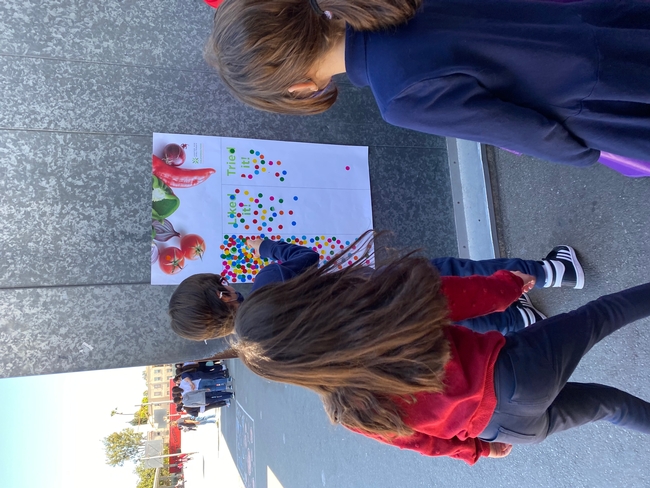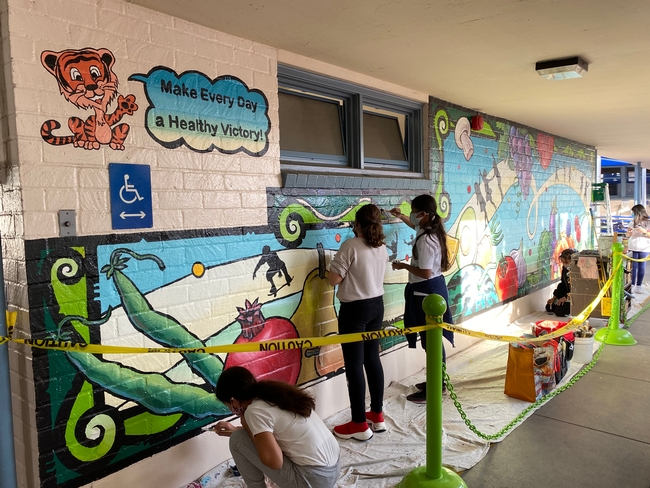Nutrition Policy Institute partnered with local health departments to evaluate school-based CalFresh Healthy Living, finding that it improved student diet during COVID-19, contributing to improved community health and wellness.
The Issue
In March 2020 schools across California halted in-person instruction in an effort to protect students and staff against COVID-19 and embarked on “distance learning.” In spring 2021, over half of California's public schools, and disproportionately those serving low-income students, remained in full-time distance learning.
Distance learning had a substantial impact on student food security and dietary intake. Many students lost access to the consistent nutrition provided by school meal programs. Additionally, students may have had increased access to less healthy foods in the home environment, and/or experienced increases in snacking behaviors and eating/drinking out of boredom. For these reasons, continuance of public health programs that operate largely in the school environment, such as the California Department of Public Health's CalFresh Healthy Living (CFHL) program, were essential to addressing health impacts and widening disparities from school closures. When schools shuttered, local health departments (LHDs) administering CFHL had to swiftly adjust their approach to classroom direct education and school-wide policy, system, and environmental (PSE) change strategies as they prepared to deliver and evaluate their school-based interventions from afar. Likewise, evaluators at Nutrition Policy Institute (NPI) needed to devise new methods to enable and support evaluation of this valuable program.
How UC Delivers
To address the need to continue delivery of high quality CFHL programming, LHDs migrated nutrition and physical activity education from delivery in-person to delivery online. Curricula were delivered live via online platforms like Zoom or Google Classroom, or pre-recorded via websites like YouTube. Popular PSE change approaches, like improving school wellness policies or implementing a school garden had limited impact on students if not attending school. With limited or nonexistent in-person school-student interaction, LHDs opted to initiate more feasible and timely PSEs like modifying food distribution practices to ensure students had access to healthy meals.
While LHDs focused on modifying interventions, NPI evaluators were busy adapting evaluation methodology for students learning outside the classroom. A key component of this evaluation involved measuring student eating and physical activity behavior using the Eating and Activity Tool for Students (EATS). Pre-COVID-19, a hardcopy survey was administered to students before and after annual CFHL interventions. In Fall 2020, NPI launched an online version of EATS and provided technical assistance to schools to support virtual administration. Survey questions were also added to capture the unique impact of school closures on students' eating and physical activity behaviors.
The Impact
In 2020-21, pre/post EATS data were collected from 1,087 students from 47 CFHL intervention schools and 846 students from 17 comparison schools- schools where no programming occurred. During this time, intervention students reported a greater increase in frequency of consumption of fruit (by 0.16 times/day; p-value=0.032) and vegetables (by 0.45 times/day; p-value<0.001) than comparison students. Research suggests that higher fruit and vegetable intake protects against the development of cardiovascular and other chronic diseases.
Our findings suggest that LHD-led CFHL programs played a role in protecting student fruit and vegetable consumption during COVID-19 school closures and exemplifies how school-based CFHL may safeguard students' access to and consumption of nutritious food. California's health departments and their school partners proved that even with program adaptations, this important work continued to positively impact student health and wellbeing. Nutrition Policy Institute contributes to UC ANR's public value of Healthy People and Communities through their leadership and support of CFHL evaluation. Efforts by NPI help California communities understand the importance of CFHL programming for their children and families.
Acknowledgments
This study was conducted as part of a contract with the California Department of Public Health with funding from the United States Department of Agriculture (USDA) Supplemental Nutrition Assistance Program-- SNAP. These institutions are equal opportunity providers and employers.

